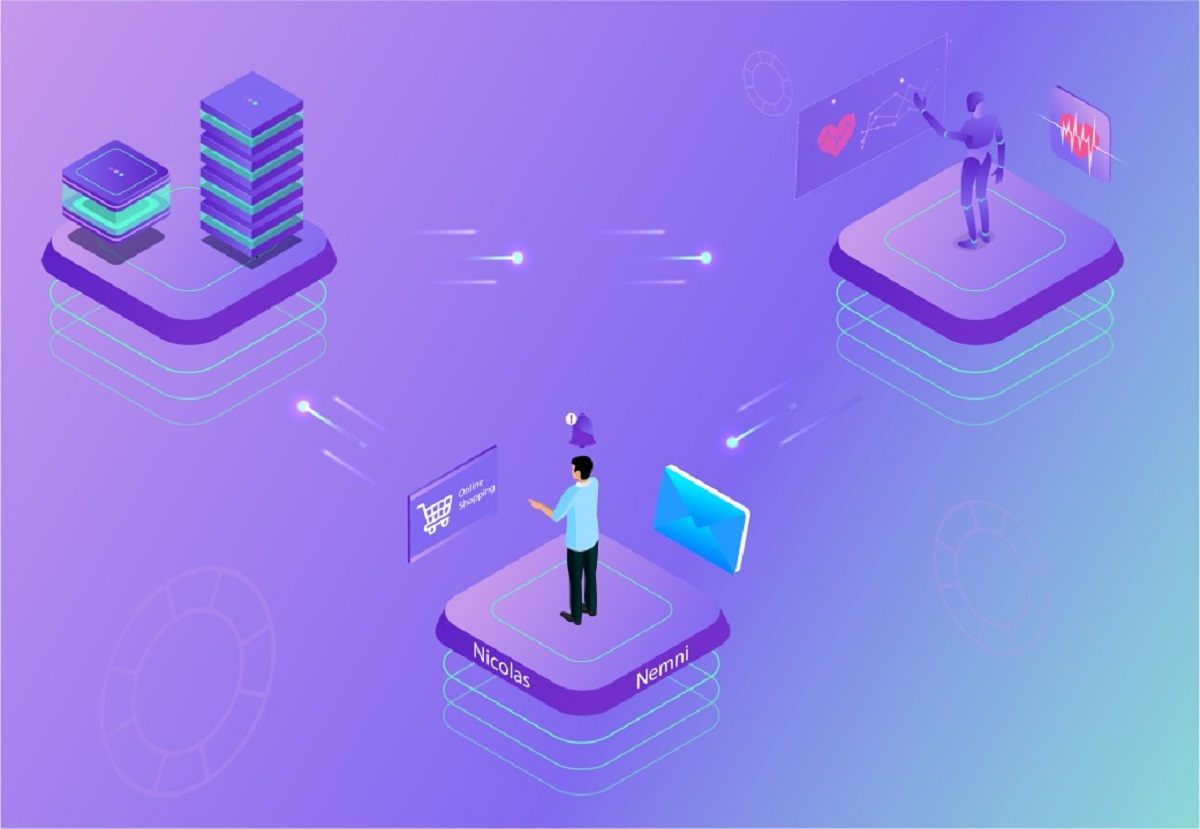Ecommerce personalization isn’t just a buzzword; it’s extremely useful for businesses looking to stand out in a crowded market. By leveraging data and advanced algorithms, retailers can create bespoke experiences that foster customer loyalty and drive sales. Ready to transform your online store into a personalized shopping haven? Let’s dive into the strategies and benefits that make ecommerce personalization a must-have for modern retailers.
Understanding Ecommerce Personalization
Ecommerce personalization involves tailoring your online store to meet individual customer preferences. It’s like having a shop assistant who knows exactly what you like and dislike. By analysing data, businesses can predict what you might need next or suggest products based on past purchases.
Personalization tools use algorithms to track browsing habits, purchase history, and user preferences. These tools can then present relevant products, which might draw your interest more effectively. For instance, if you’ve previously bought running shoes, you might see suggestions for sportswear or fitness gadgets.
Dynamic content plays a key role in personalization. This means the website changes based on user behaviour. Think of it as a chameleon adapting to different environments. The site’s layout, product recommendations, and even promotions adjust in real-time. Is there a certain brand you favour? The site will highlight it more prominently for you.
Social proof is another dimension. Reviews and ratings customised according to your browsing patterns can enhance credibility. Seeing positive feedback related to your interests suggests those products might be trustworthy and reliable.
Customer segmentation is also crucial. By grouping users based on shared characteristics, tailored promotions can be crafted. Premium customers might receive exclusive offers, while new visitors might get introductory discounts. This segmentation ensures every interaction feels personalized and meaningful.
Even your checkout experience can be personalized. Pre-filled forms with your details make the process faster. Suggestions for complementary products at checkout might enhance your shopping journey.
Benefits of Ecommerce Personalization
Ecommerce personalization brings numerous advantages that can enhance your online store’s performance and customer satisfaction.
Increased Customer Engagement
Your customers want to feel understood. When you use personalization, they’ll interact more with your site. By analysing their past behaviour, you can show them items they like. This approach keeps them exploring your products. For instance, offering recommendations based on what they’ve browsed before can spark interest. Someone viewing a dress might also like a matching pair of shoes, which you can suggest. Through this, you keep them engaged, avoiding the risk of them losing interest.
Higher Conversion Rates
Personalization isn’t just about engagement; it drives conversions too. When customers see products tailored to their tastes, they’re more likely to purchase. If someone frequently buys kitchen gadgets, showcasing new arrivals in this category can entice them. Additionally, personalized promotions or discounts can nudge them towards a purchase. Consider this—how often have you been swayed by a special offer that felt just right for you Experts note personalized experiences can significantly boost your conversion rates.
Improved Customer Loyalty
Loyal customers are a cornerstone of successful businesses. Personalization helps build this loyalty. By showing customers you understand their preferences, you create a bond. Returning visitors who find personalized greetings or exclusive offers feel valued. For instance, a regular buyer of skincare products might appreciate personalized skincare tips or early access to new lines. This not only retains them but turns them into brand advocates. How likely is someone to switch to another vendor if they feel truly valued by yours? personalization enhances their shopping experience and fosters loyalty.
Types of Ecommerce Personalization
Exploring ecommerce personalization, there are distinct techniques that make shopping experiences unique.
Behavioural personalization
Behavioural personalization tailors content based on customers’ actions. When you browse products and click on items, the system collects data. Recommendations then reflect your interests. Ever noticed ads following you online? That’s behavioural personalization. It also customises email marketing. You receive promotions relevant to what you’ve viewed or bought. Curious about why certain products are suggested to you? It’s all in your browsing history.
Contextual personalization
Contextual personalization adapts based on current contexts. Visiting a site on your mobile may show different layouts than on a laptop. The system considers factors like location, time of day, and device. Checking a site in the morning? You might see offers for coffee or breakfast items. This type ensures your experience is relevant to your moment. Are you accessing from a café? Expect suggestions for portable products.
Demographic personalization
Demographic personalization uses age, gender, and other attributes to customise experiences. For example, if you’re a teenage girl, the products you see dress trends. Being a middle-aged man might display gadgets or tools. Brands also consider household income. Higher earners might get exclusive deals. Ever wondered why some sites ask for your birth date or gender? It enhances demographic personalization. Mastering these types of personalization ensures tailored ecommerce experiences for every customer.
Tools and Technologies for Ecommerce Personalization
Personalization Engines
Personalization engines might be the heart of your ecommerce strategy. They analyse customer data to create tailored experiences. These engines use algorithms to assess purchasing behaviours, preferences, and past interactions. Implementing a personalization engine can enhance the shopping journey, offering tailored product offerings and content suggestions. Integrating a robust engine is key to staying competitive.
Recommendation Systems
Recommendation systems can turn random browsing into curated experiences. They analyse browsing history, purchase patterns, and product interactions. Ever noticed how streaming services suggest movies you might like? That’s a recommendation system at work. Ecommerce sites use these systems to show relevant products to customers, increasing the chances of a sale. Think of it as having a personal shopping assistant available 24/7.
AI and Machine Learning
AI and machine learning drive advanced ecommerce personalization. They process massive data sets to detect patterns and trends. Chatbots, for instance, can suggest products based on user queries and behaviours. Machine learning models continually refine accuracy. The more data they ingest, the smarter they become. Integrating AI might sound complex, but the potential rewards include better customer engagement and increased loyalty.
Best Practices for Implementing Ecommerce Personalization
Ecommerce personalization enhances customer experiences and drives loyalty. Following best practices ensures effective implementation and results.
Data Collection and Analysis
Collecting accurate data is crucial. Use tools to gather information on browsing history, purchase patterns, and user preferences. It’s vital to analyse this data regularly, searching for trends and insights. You might wonder why analysis matters. Only by deeply understanding customer behaviour can you tailor experiences effectively. Remember, data without analysis is like a book never read.
User Segmentation
Segmenting users involves grouping them based on shared characteristics. Create segments using demographics, behaviour, or purchase history. Tailor marketing strategies to each user group. Does this sound complex? It might seem so, but targeted segments are essential for relevant personalization. Grouping users helps to deliver content that resonates, increasing engagement and conversion rates.
Continuous Testing and Optimisation
Testing and optimisation ensure your personalization strategies stay effective. Continuously run A/B tests on different elements like personalized messages and product recommendations. Optimise your approach based on test results. You might think, how often should I test? Regularly testing ensures that your personalization remains relevant as customer preferences evolve. Remember that improvement is an ongoing journey. By refining strategies, you maximise success.
Challenges in Ecommerce Personalization
Ecommerce personalization aims to create unique experiences but it faces several challenges that hamper its effectiveness. Addressing these issues is essential for delivering optimal personalized experiences.
Privacy Concerns
Customers value their privacy. When personalizing for online experiences, you might encounter hesitancy from users who fear misuse of their personal data. Concerns about data breaches and misuse can create barriers to effective personalization. To overcome this, transparent practices and robust data protection measures should be in place. Inform users about their data usage and give them control over what gets shared.
Data Management
Effective personalization depends on data accuracy. If your data management is flawed, it will hinder personalized experiences. Managing large volumes of data from various sources can be tricky. Data inconsistency, duplication, and inaccuracy complicate the process. Implementing advanced data analytics tools and maintaining data hygiene ensures precise personalization. These tools can highlight trends and segment users more efficiently.
Resource Allocation
Personalization requires significant investment. Without proper resource allocation, achieving desired personalization outcomes becomes difficult. This involves both financial and human resources for data collection, analysis, and system maintenance. It can be challenging to prioritise these investments, particularly for small businesses with limited budgets. Consider prioritising scalable solutions and investing strategically to maximise the impact of resources. Running pilot tests and phased implementations can also manage resources better.
Final Thoughts
Ecommerce personalization is no longer a luxury but a necessity for thriving in today’s competitive market. By understanding your customers’ unique needs and preferences you can create a more engaging and satisfying shopping experience. While challenges like privacy concerns and resource allocation exist, adopting best practices and advanced analytics can help you figure out these hurdles effectively. Prioritising scalable solutions and pilot tests ensures that your personalization efforts are both impactful and sustainable. Embrace the power of personalization and watch your ecommerce business flourish.





